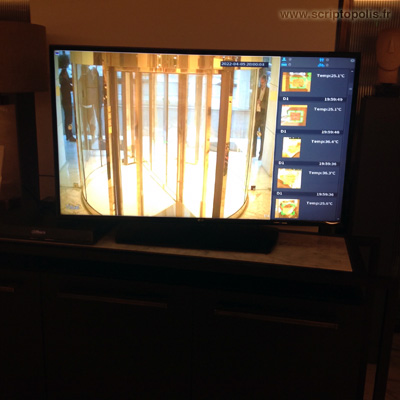Surveilance
Athens, May 2022.
The international hotel was very classic: a cubic mass of about a dozen floors, located in a semi-central area with “sea view” for half of the rooms, i.e., the ability to look out over the port area. Revolving door at the entrance, a porter/carrier and two people at the front desk, in uniform, to ensure the proper entry and exit of guests. Only the masks worn by everyone remind us that the COVID-19 epidemic here is not considered over.
While waiting for a colleague in the hall, a television screen catches the eye: no 24-hour news channel, nor institutional advertising, but the broadcasting of a surveillance camera that targets the entrance door. No wonder, this allows the reception staff to indirectly perceive the arriving customers. But if a human appears in the field, suddenly squares overlay faces, showing that a pattern recognition program is at work. These squares take on a green color while a series of numbers appear next to them: 35.2°C, 36.1°C. The notation is English, but the unit is international: shape recognition is associated with a temperature measurement, with green marking the entities considered healthy. On the side, recorded screens that register the last passages, with temperatures of 25°C marking the limits of the instantaneous measurement device.
So I wait impatiently for a red square to appear on the screen, but despite thirty or so run-throughs, the green remains uniform. No customer has paid any attention to the screen, nor have the reception staff. In epidemiology, this is called passive surveillance.







